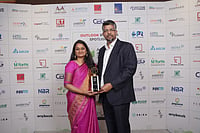Across industries, enterprises are rapidly modernizing their IT ecosystems by embracing cloud-native principles, and nowhere is this transformation more profound than in the realm of SAP workloads. The convergence of containerization, microservices, and Kubernetes orchestration is enabling organizations to shed legacy bottlenecks, boost agility, and optimize operational performance. From complex ERP systems to real-time analytics pipelines, businesses are using Kubernetes not just for orchestration but as a foundational layer for innovation, reliability, and cost efficiency.
A key contributor to this evolution is Naresh Kumar Rapolu is a seasoned SAP technical lead who has played a pivotal role in driving enterprise-wide digital modernization using Kubernetes. With a strong focus on SAP BTP strategy and secure multi-cloud deployments, Naresh has led initiatives that bridge traditional SAP environments with the agility of cloud-native technologies.
Naresh’s work includes integrating Kubernetes with observability tools like Prometheus, Grafana, and SAP Cloud ALM, thus resulting in real-time insights into application and infrastructure health. He championed the modernization of legacy SAP workflows, containerizing custom applications and transitioning them to Kubernetes using cloud-native principles. These efforts were reinforced with robust CI/CD pipelines built on Jenkins, GitLab CI, and ArgoCD, automating vulnerability scans, builds, and rolling deployments with minimal downtime.
As a critical driver of cloud-native strategy within his organization, he enabled the shift from virtual machine-based SAP environments to Kubernetes-managed workloads. This move directly contributed to faster releases and greater resilience. Notably, his GitOps-driven approach using ArgoCD and Helm empowered developers with self-service deployment capabilities, decreasing reliance on operations teams and accelerating innovation cycles. “We achieved a 65% increase in deployment speed and transitioned from monthly to bi-weekly releases. This level of agility was unthinkable in our legacy landscape,” he notes.
By fine-tuning the autoscaling strategies, including horizontal pod autoscaling and cluster autoscaler mechanisms, he led initiatives that saved the organization over $500,000 annually in cloud infrastructure costs. These optimizations ensured Kubernetes workloads scaled seamlessly during peak periods, especially in sectors like FMCG and Retail, where traffic surges are unpredictable yet critical. In disaster recovery scenarios, his deployment of Kubernetes-native backup and restore tools brought down switchover times from four hours to just twenty minutes, bolstering business continuity.
Some of the most complex and high-impact projects include the Enterprise Kubernetes Implementation for SAP Extensions, where he deployed Kubernetes clusters on Azure Kubernetes Service (AKS) for SAP BTP applications with seamless SSO via Azure AD. Another milestone was the successful migration of SAP custom applications from monolithic designs to micro-services on Amazon EKS. His multi-cloud proficiency was further demonstrated in designing Kubernetes clusters on Azure, AWS, and GCP for a global FMCG client, ensuring vendor neutrality and disaster recovery readiness. Additionally, Naresh facilitated the deployment of AI/ML models, using SAP Data Intelligence and KServe, onto Kubernetes, proving its capability as a platform for advanced analytics.
Navigating these transformations wasn’t without challenges. One significant hurdle was orchestrating consistency across diverse cloud providers with varying Kubernetes services. To address this, he implemented multi-cloud federation strategies, standardized monitoring across environments, and enforced unified security policies. Ensuring SAP compliance in Kubernetes environments also required ingenuity, Naresh deployed network policies, secrets encryption, RBAC tuning, and pod security standards to satisfy stringent data protection regulations.
Reflecting on his journey, he emphasizes on the fact that technology alone isn’t sufficient. “Successful Kubernetes adoption demands more than engineering excellence. It requires a cultural shift, embracing new operational models, governance structures, and a mindset of continuous improvement,” he says. He advocates for incremental migration strategies, pilot deployments, and investment in self-healing, observable architectures. Looking forward, he sees serverless Kubernetes and internal developer platforms (IDPs) as the next frontier, as they will help organizations to abstract away infrastructure concerns and accelerate product delivery.
Naresh’s contribution is evident in the improvements across deployment frequency, cost savings, and system resilience. His approach serves as a benchmark for organizations navigating the complex yet rewarding journey of cloud-native transformation for SAP landscapes.


























